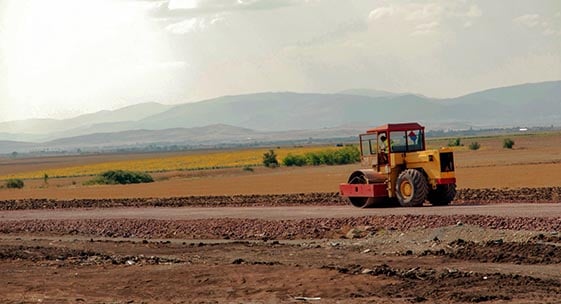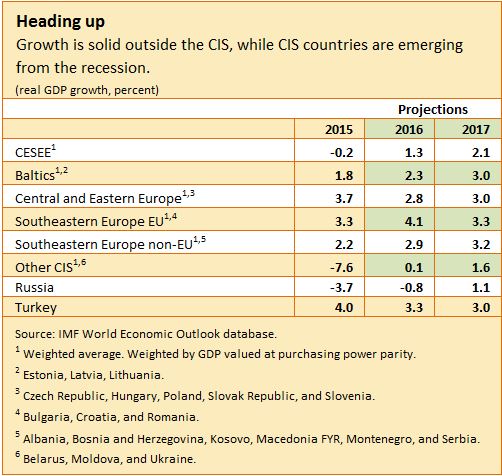
Road construction in Bulgaria. Public investment could give momentum to growth in emerging Europe (photo: DIN/Moment Open/Gettyimages)
Emerging Europe: Mostly Growing, but Questions Remain About Medium-Term Growth
November 2, 2016
- Solid growth in most of the region, CIS emerging from recession
- But sustaining current growth requires further structural reforms
- Better tax administration, public investment can free up 2-4 percent of GDP in extra resources
Economic growth remains solid in much of Central, Eastern, and Southeastern Europe (CESEE), while Russia’s outlook is improving, and other countries of the Commonwealth of Independent States (CIS) are emerging from recession, says the IMF in its latest Regional Economic Issues report on the region.
Related Links
For the region as a whole, GDP growth is projected to reach 1.3 percent in 2016 and 2.1 percent in 2017, largely reflecting the improved outlook in CIS (see table).
Outside the CIS, growth continued at a good pace led by buoyant consumption, reflecting declining unemployment and rising wages. Credit recovery is picking up in the region.
CIS countries are turning the corner. In Russia, the contraction is set to moderate as oil prices edged up from their lows, while the rest of the European CIS members make use of improved demand for their products and services to emerge into growth.

More reforms to sustain strong growth
Nevertheless, the re-acceleration of potential growth and convergence with advanced Europe has remained a defining challenge for the region since the crisis. Current growth levels may be difficult to sustain over the medium term without increasing productivity. Still lagging investment and scarce labor supply due to an increasingly large share of elderly people weigh on medium-term growth in the region.
In countries where solid growth has continued for a number of years and unemployment rates are back to pre-crisis levels, the relatively good times should be used to reduce fiscal deficits, relying as much as possible on growth-friendly measures. As described in the spring review of the CESEE region, further structural reforms, including in the areas of legal systems and property rights, as well as enhancing government efficiency (see box) are necessary to maintain strong growth.


